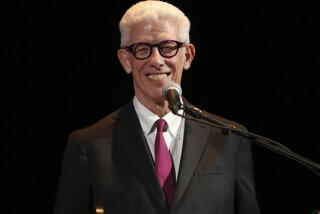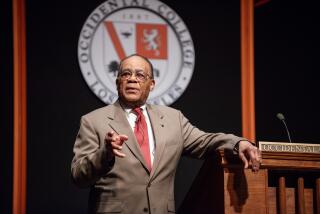Har Gobind Khorana dies at 89; biologist, chemist won Nobel Prize
Har Gobind Khorana, who rose from poverty in rural India to become a giant of modern biology, winning the Nobel Prize in 1968 for work that helped decipher the genetic code and explain how cells make proteins, died Nov. 9 in Concord, Mass. He was 89.
Khorana died of natural causes, according to the Massachusetts Institute of Technology, where he was an emeritus professor of biology and chemistry.
Described by colleagues as brilliant and humble, Khorana shared the 1968 Nobel Prize for physiology or medicine with two other scientists, Robert W. Holley of Cornell University and Marshall W. Nirenberg of the National Institutes of Health. Working independently, they were recognized “for their interpretation of the genetic code and its function in protein synthesis,” the Nobel citation said.
Their work examined chemical bases called nucleotides, which are strung together in a certain order to form the genetic information in DNA, the genetic material of living things.
Khorana’s interest in genetic research began in the early 1950s during a research fellowship at Cambridge University, where scientists James Watson and Francis Crick discovered the molecular structure of DNA in 1953.
Building on the discoveries of Watson, Crick and others, Khorana helped establish which combinations of nucleotides form specific amino acids, the building blocks of proteins.
The work of Khorana, Nirenberg and Holley determined that the nucleotide code is always transmitted to the cell in groups of three, called codons. Khorana discovered the precise arrangement of nucleotides in each of 64 groupings. He and Nirenberg also found how certain groupings of nucleotides instruct a cell to start or stop making a protein.
In 1972, after Khorana joined MIT, he led a research team that hooked together man-made nucleotides to produce the first artificial gene. Four years later he announced that he had made an artificial gene function normally in a bacterial cell.
In the 1980s, he synthesized the gene for rhodopsin, a light-sensitive protein essential in human vision. He also investigated mutations in rhodopsin that are associated with retinitis pigmentosa, an eye disease.
His breakthroughs would pave the way for genetic engineering.
“That entire [development] is based on Gobind’s chemistry,” said Aseem Ansari, professor of biochemistry and genomics at the University of Wisconsin. “Gobind was my inspiration.”
Khorana was the youngest of five children, whose father was a lowly tax clerk in the tiny Punjabi village of Raipur, which is now part of Pakistan. His exact birth date is unknown, but his best guess was Jan. 9, 1922.
Although poor, his father emphasized education and his children were literate, which made them extremely unusual in their village. Khorana earned a scholarship to Punjab University in Lahore, earning a bachelor’s degree in 1943 and a master’s in 1945 in chemistry and biochemistry. He left India in 1945 to study at Liverpool University, where he received his doctorate in organic chemistry in 1948. He conducted postgraduate work at Zurich’s Federal Institute of Technology, where he met his wife, Esther Elizabeth Sibler.
Khorana later held research positions in Cambridge, England, and in Vancouver, Canada. At the University of British Columbia in 1959, he and a colleague, John G. Moffatt, were credited with synthesizing coenzyme A, which boosts metabolism.
In 1960 Khorana moved to the University of Wisconsin at Madison, where he co-directed its Institute for Enzyme Research. He became a naturalized American citizen in 1966.
He left Wisconsin for MIT in 1970 and retired in 2007.
His wife died in 2001, and their daughter, Emily, died in 1978. He is survived by two children, Julie and Dave, both of Massachusetts.
More to Read
Start your day right
Sign up for Essential California for the L.A. Times biggest news, features and recommendations in your inbox six days a week.
You may occasionally receive promotional content from the Los Angeles Times.




















































